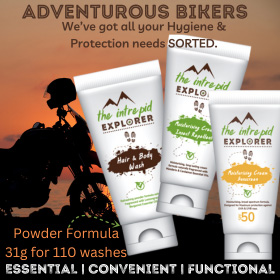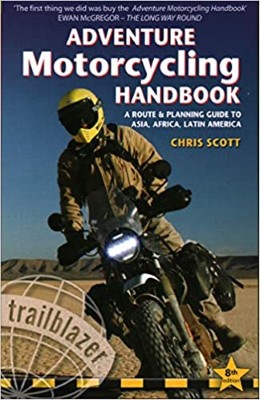Quote:
Originally Posted by mollydog

Agree, crank up preload pre-install ... BUT ...
I would think about ditching that shock altogether and swap in one with remote preload adjustment ... common feature on modern shocks and a MUST for a travel bike. Worth it to upgrade if one will fit the Honda.
|
That's the point Molly - there isn't a shock with a remote preload adjuster that will fit the CB500X, which is why, even though we had a shock specially developed for this bike, we were not able to fit a remote preload adjuster - there is no space, particularly on the ABS equipped bikes (well, not for a hydraulic one anyway, we are still looking at the feasibility of manufacturing a mechanical cable driven worm drive).
If I might address a number of the comments between you and Chris (without trying to quote all the individual posts) to the thread in general...
As Mollydog explains, preload of the shock is essentially for setting the ride-height depending on the load carried (unladen vs. with luggage and/or a pillion etc.) and that it is the damping settings that will affect how the spring reacts under various conditions - thanks for the summary of what each adjustment will do btw. Molly...
To answer Chris - The Rally-Raid/TracTive Adventure shock is longer to give more travel, while the new linkage plates are designed to retain (as closely as possible) the original leverage geometry, so that the full length of the shock is utilised*.
*This enables the shock to work more efficiently and feel more plush than if the reverse were to happen and the ratio was changed so that less shock stroke = the same distance travelled, and why that ultimately a 1:1 ratio would be the most efficient of all.
It is interesting that Chris is suggesting a stiffer rear spring for the bike - it's not necessarily something I disagree with, but as I trust everyone will appreciate, the primary purpose of the Adventure conversion was to bestow greater rough road comfort and ability on the bike while travelling over long distances, not turn it into some sort of enduro machine.
Fundamentally, not only does soft[er] suspension help to soak up the bumps at a modest pace, but it also helps to maintain traction (and steering and braking) by allowing the wheels to follow the ground more accurately - all things we considered important on this sort of bike.
At the end of the day, this bike only has 170mm of travel at each end, so ultimate speed off-road is always going to be limited by the physical.
Interestingly, the editor of Adventure Bike Rider commented recently that the 'problem' we now have is that actually the Adventure conversion to this bike is so good, it encourages you to ride the bike far harder and faster than you might otherwise consider prudent on any other mid-size (on indeed full size) twin-cylinder 'adventure' bike - and where ultimately the limits of the suspension travel become apparent. The saving grace perhaps is that the quality of the damping means that at least when the limit of travel is reached, it is not harsh or abrupt.
Indeed, we consider it flattering that he chose to compare it to something like an XT660 which is far more dirt-bike derived, rather than our original target which was the F700GS, and to a lesser extent the [more road biased] 650 V-strom, and the venerable KLR650 of course.
As both Molly and Chris have commented, the forks on this bike - despite the revised internals - are still of a basic design, and I would add can only ever offer limited overall travel. While the Rally-Raid kit offers a huge improvement in the action and damping control compared to the OEM, it is not going to ride like a bike with a £1000+ set of forks on it.
We are currently speaking to TracTive with regard to offering some stiffer rate springs for both the front and rear of this bike, for those people who want to go harder and faster - but please be aware that is likely to reduce the feeling of plushness you get at slower speeds and in more technical terrain.
Everything is a compromise.
Jx

















 82Likes
82Likes














 Threaded Mode
Threaded Mode








